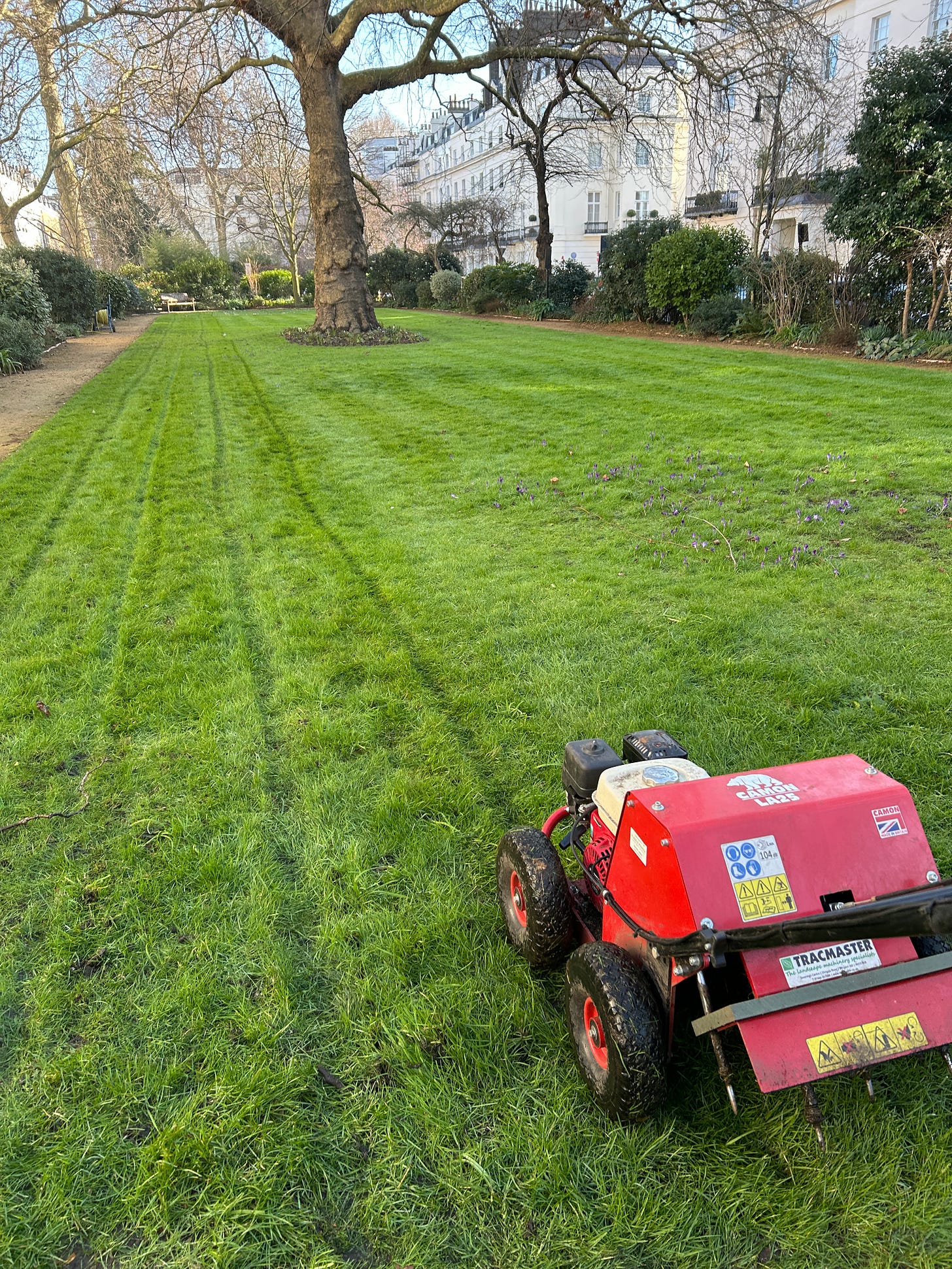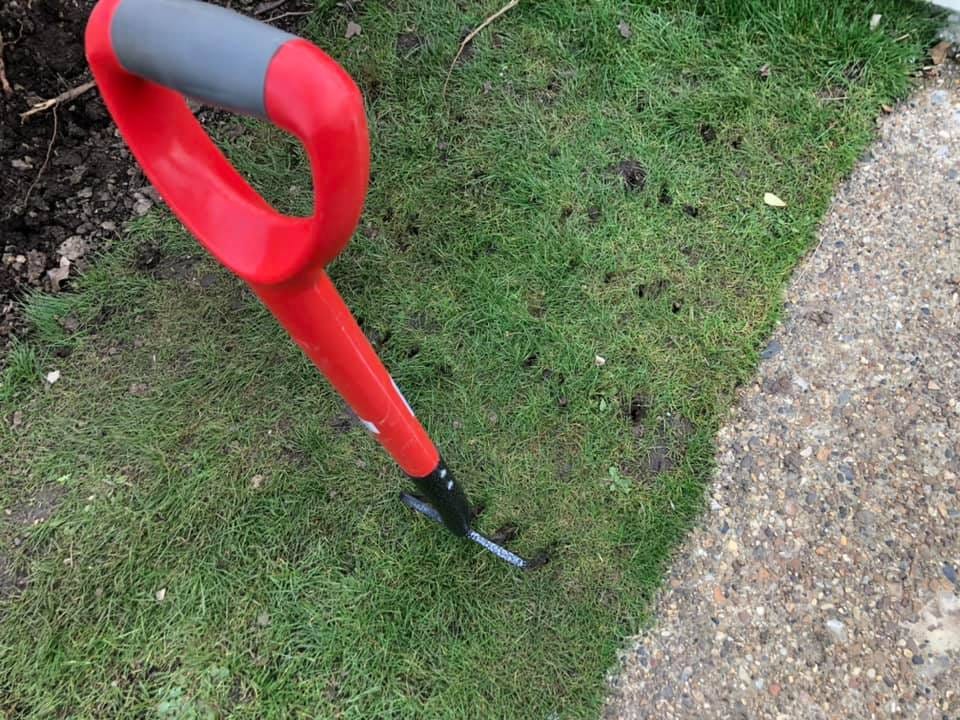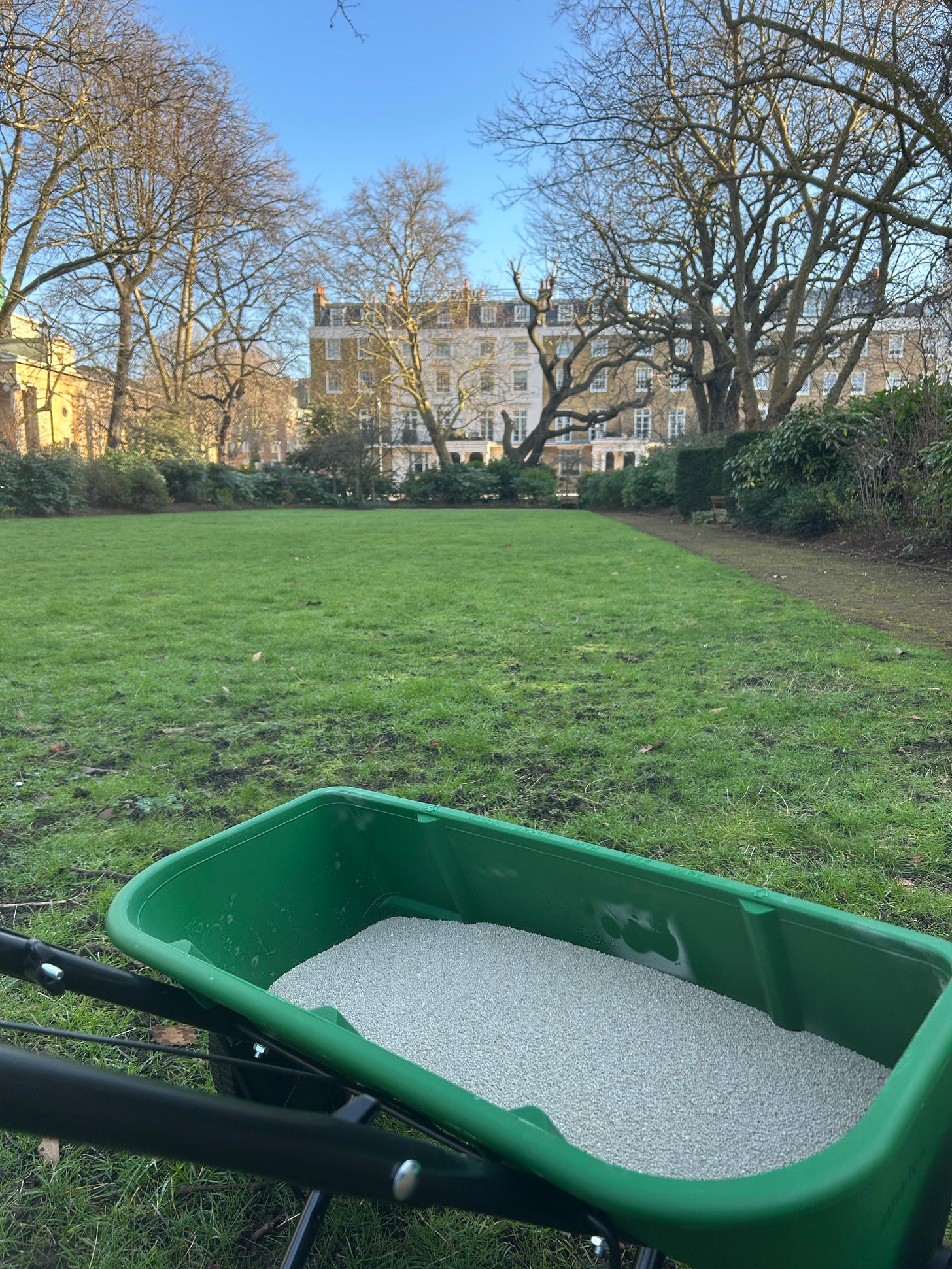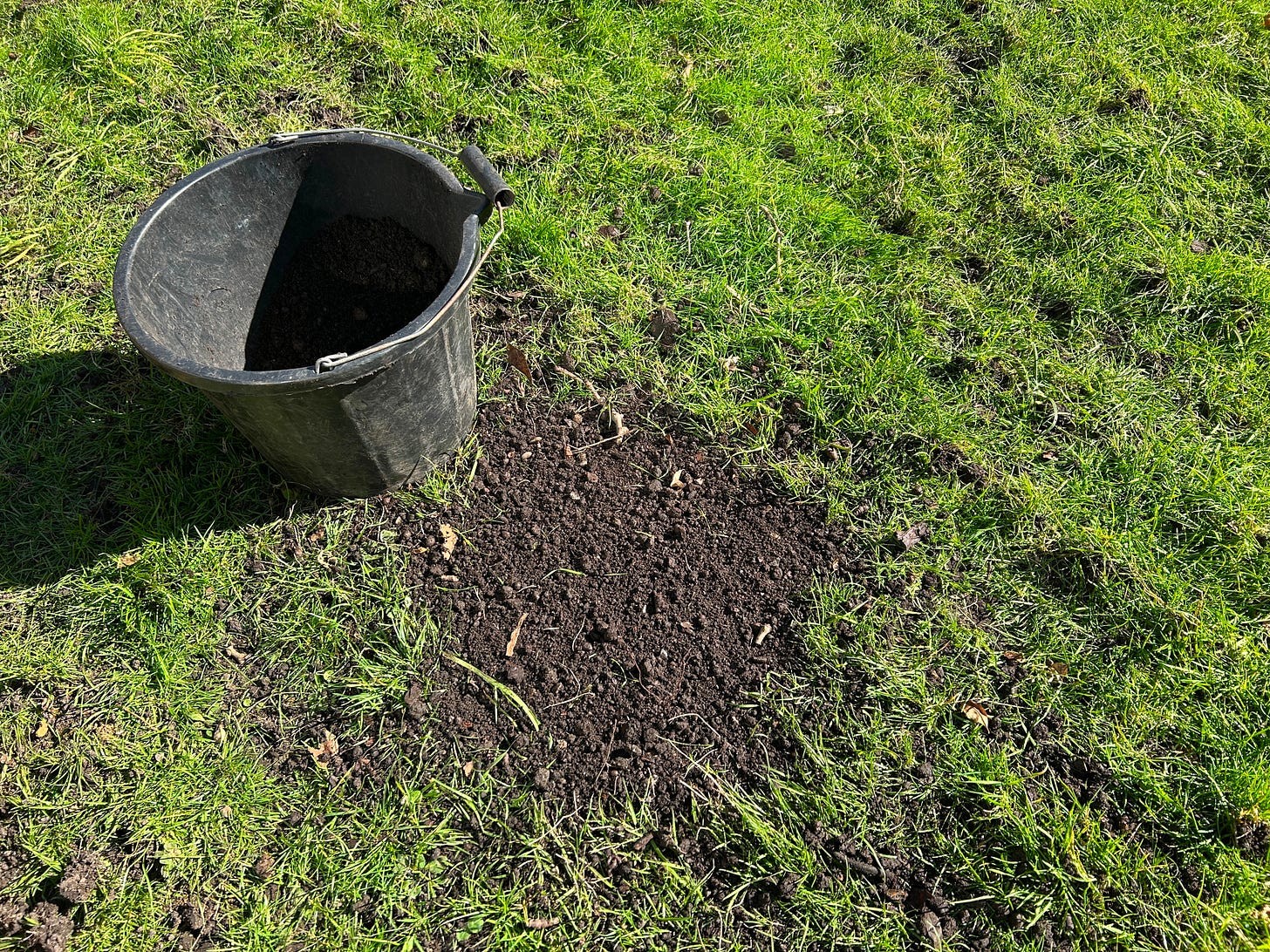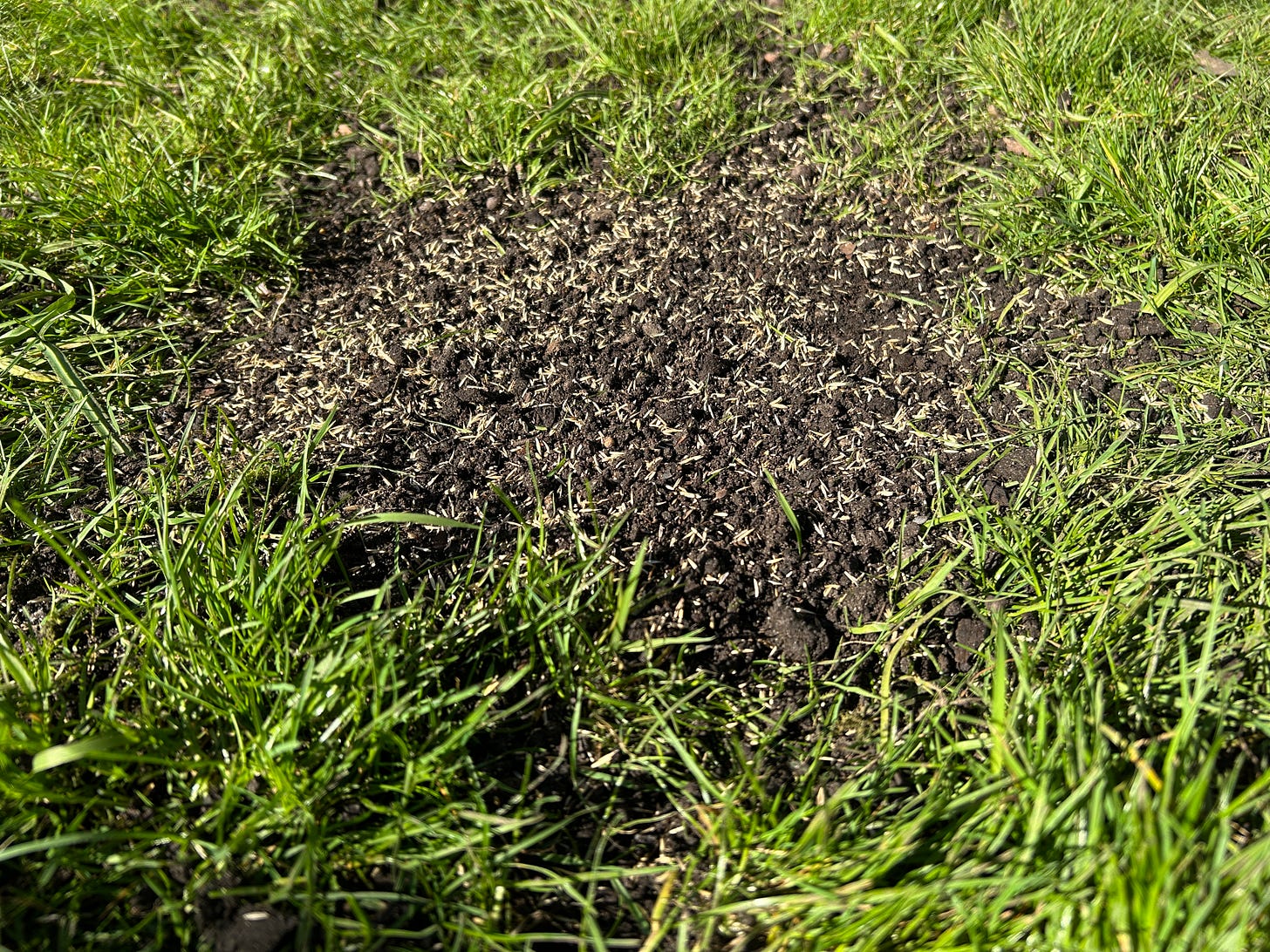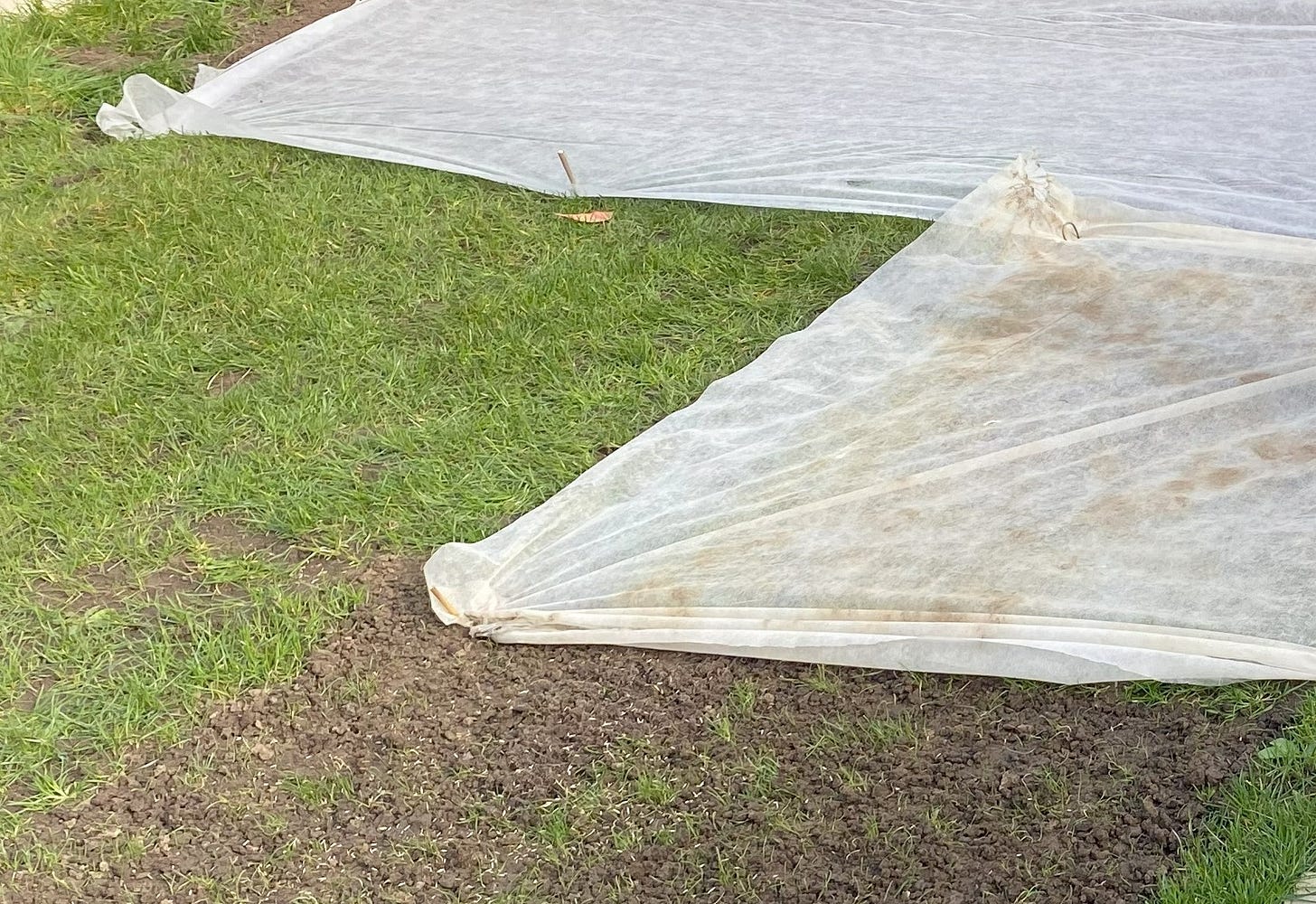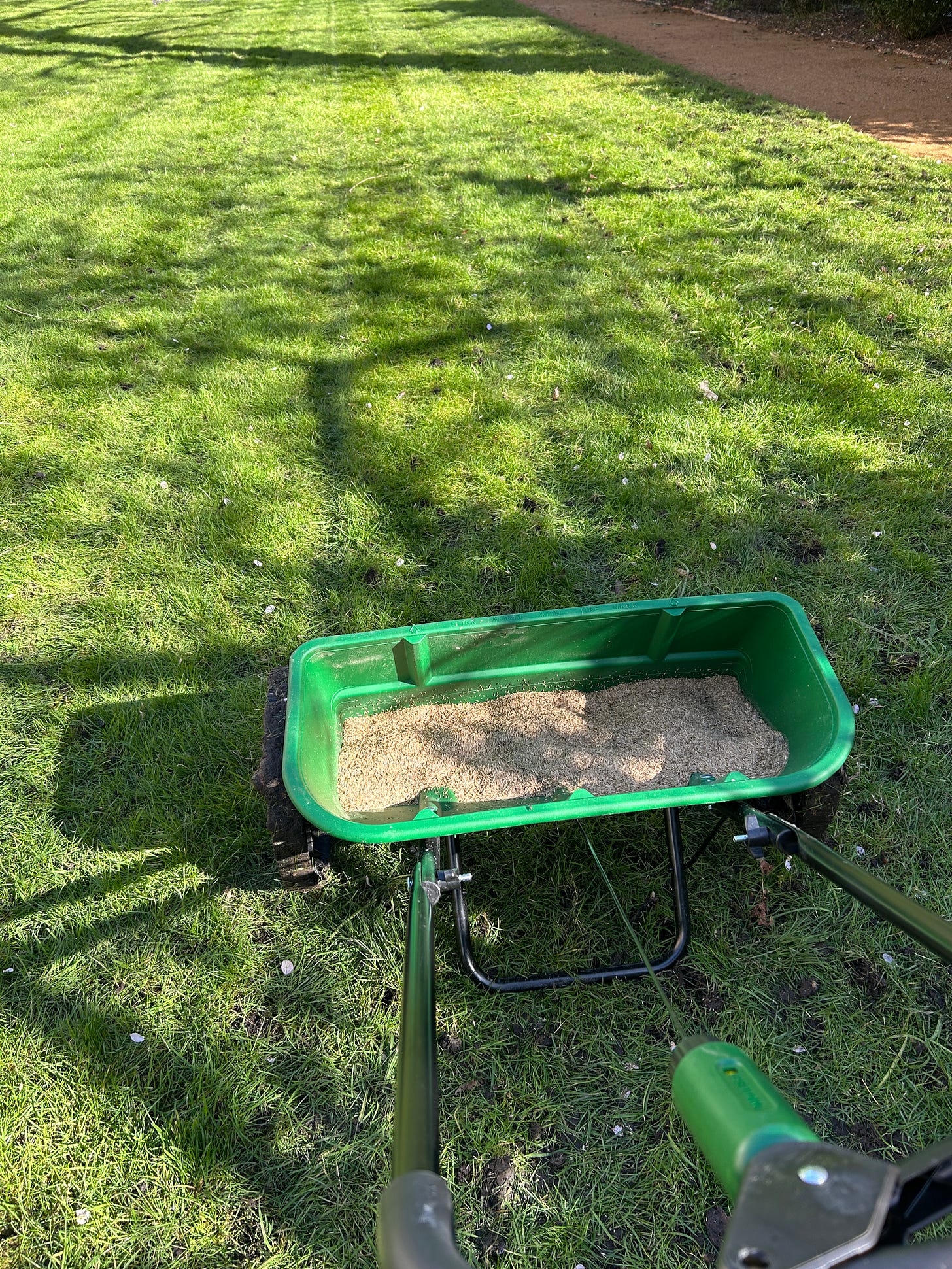March is here and the ground is warming up. This means your lawn will start to begin to put on growth, if it hasn’t started already. Yet before it really gets going, there are some jobs that can be done to ensure that it looks its best throughout the summer.
Aeration
My regular subscribers might remember that I mentioned aeration during my autumn lawn maintenance article. The truth is you can never do too much aeration. The ground staff at golf courses and sports fields will carry out aeration once a month to improve the quality of their turf, so you doing it twice a year to your own lawn won’t do it any harm.
For those haven’t read my previous article, aeration is the process where you drive spikes into the lawn, creating holes and breaking the compaction caused by the many feet who have walked and ran across your lawn. Like all parts of the plant, roots need oxygen. A compacted soil cuts off that oxygen and slowing the plant’s growth. It can also stop rain water from entering the lower parts of the ground. It is very important to allow surface water to drain into lawns over the summer to keep them looking as lush as possible.
For smaller lawns you can use a fork or a special aeration tool to manually spike the ground, but for most medium or large lawns I would highly recommend using a motorised aerator. It will save you a lot of time and effort, as well as stopping you breaking your back. Depending on the kind of soil you have, the spikes should be at least 5cm deep to be effective.
Fertilising
If you like your lawn cut regularly, and with the clippings removed, then that’s a lot of nutrients being taken away from the soil beneath your lawn. That nutrients needs to be replaced if you want to keep your grass healthy. An early season slow-release fertiliser is ideal to give your lawn the goodness it needs throughout the summer.
I would recommend you use a purpose built fertiliser spreader to do this. They have the correct collaboration controls needed to ensure you spread the correct amount of fertiliser on your lawn.
If you don’t want to use chemical fertilisers on your lawn, you can try not collecting your grass clippings when you mow. Left on the lawn, the clippings breakdown relatively quickly, releasing nutrients back into the soil. Ideally these clippings should be short, so it does require you to cut your lawn frequently.
Patch Repair
Over the winter patches of your lawn may have died off or had never fully recovered from being worn out over the summer. These patches can now be repaired with fresh grass seed. Do not attempt this unless you are experiencing regular temperatures of above 5 degrees Celsius, or the grass seed will not germinate.
First, scrape the surface of the patch with a stiff rake, removing unwanted objects and breaking up its surface. This will create a fine tilth needed for the seed to grow in. Next, sprinkle good amount of the appropriate grass seed over the patch. Then finally give it another rake to cover the seed with soil.
Do not let the grass seed dry out once sown, so please keep it watered or cover it with horticultural fleece to retain the moisture.
Over-Seeding
The final job is to give your whole lawn a sprinkle of lawn seed. This will hopefully fill in the gaps within your lawn, creating a more thicker and hardwearing turf. A good turf has several different species of grass, that grow at different heights and complement each. Over the summer and winter some of the small grass can die off, so it’s important to top them up in the spring.
In small gardens, simply walking up and down your lawn, sprinkling seed as you go, is fine. For larger lawns you can again use a simple pedestrian spreader to help you.





